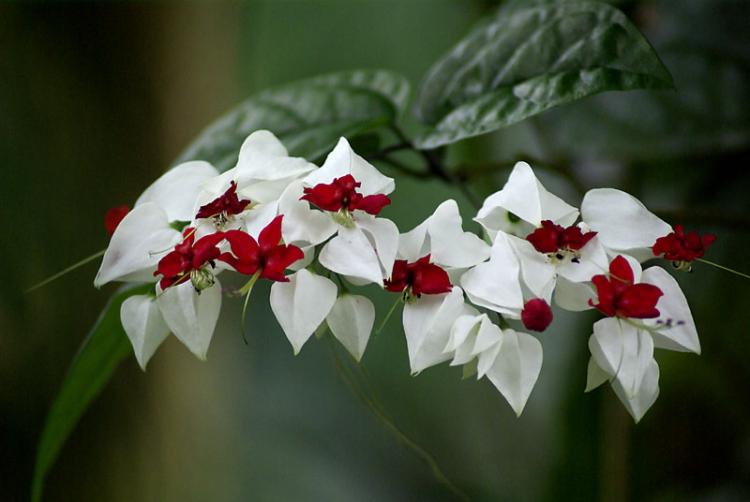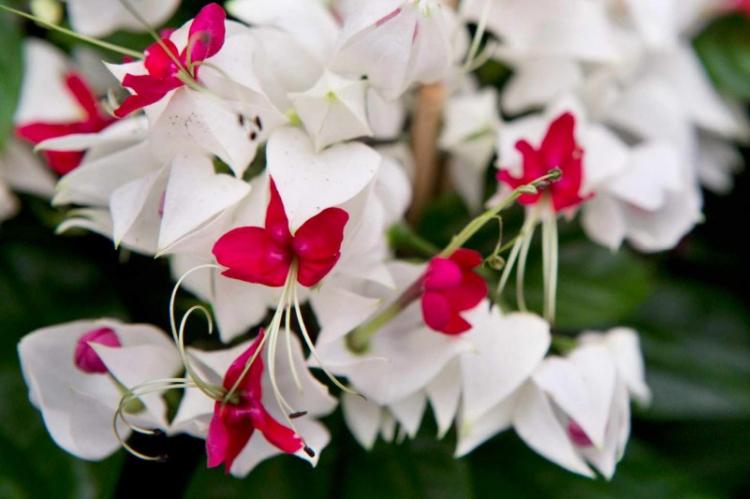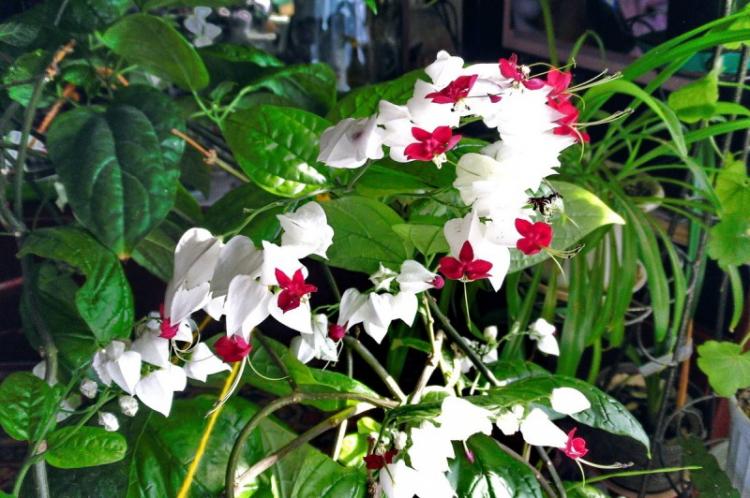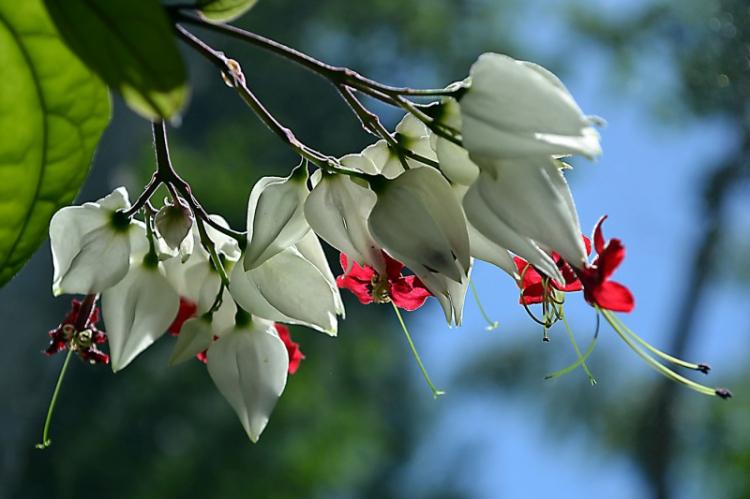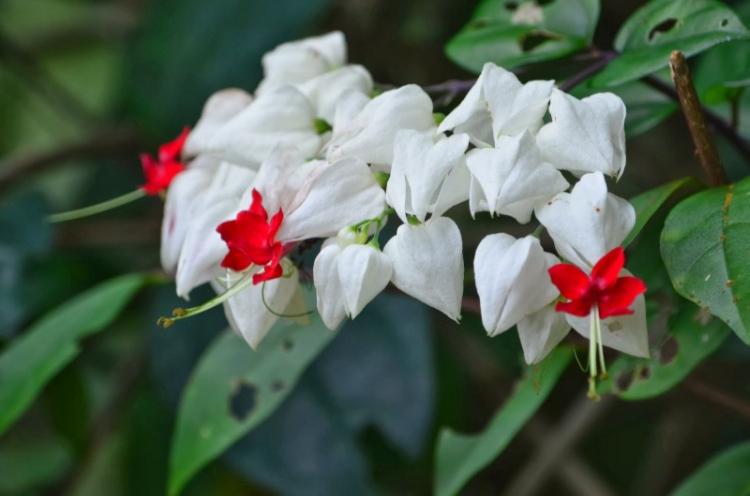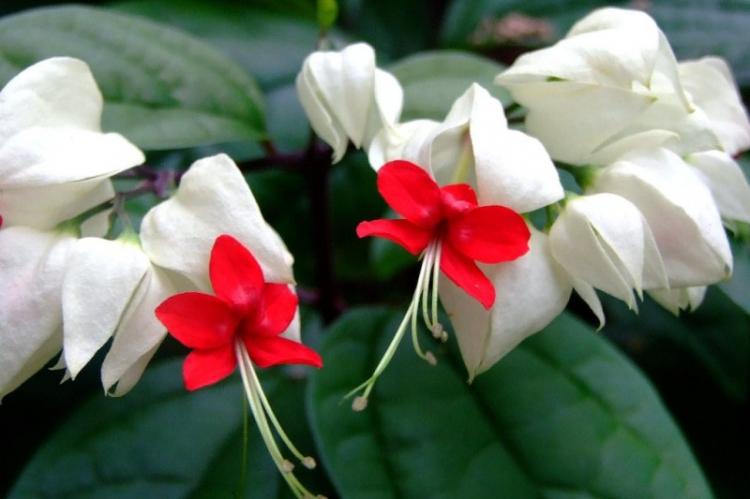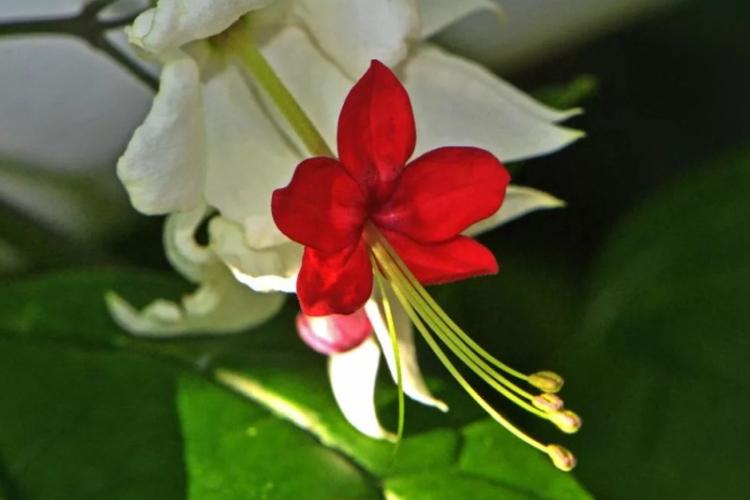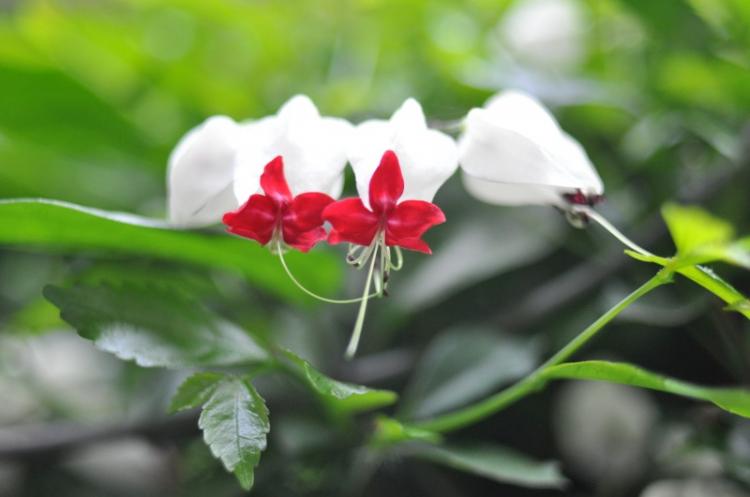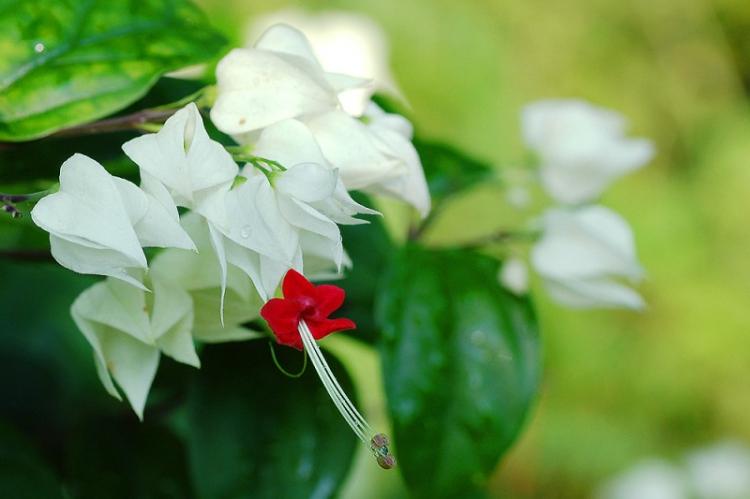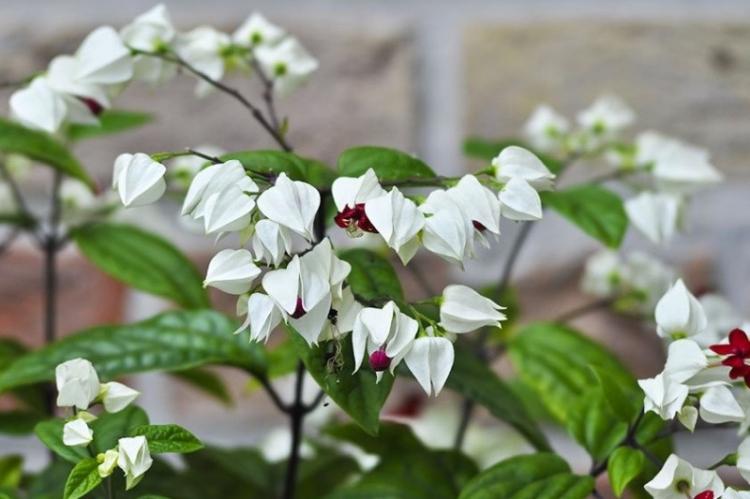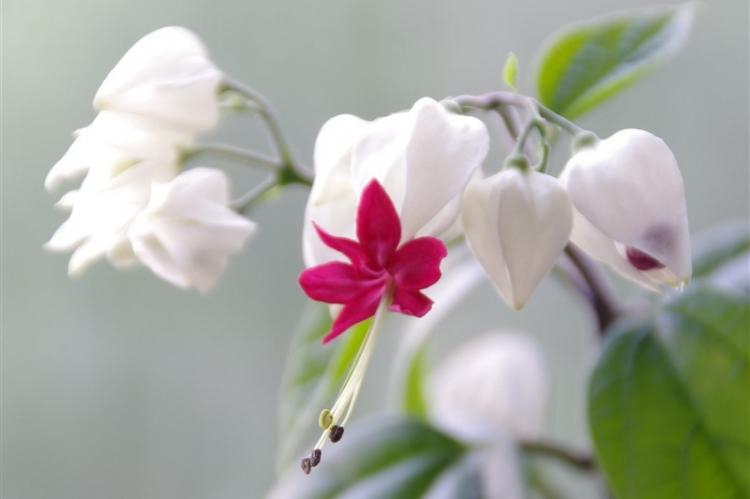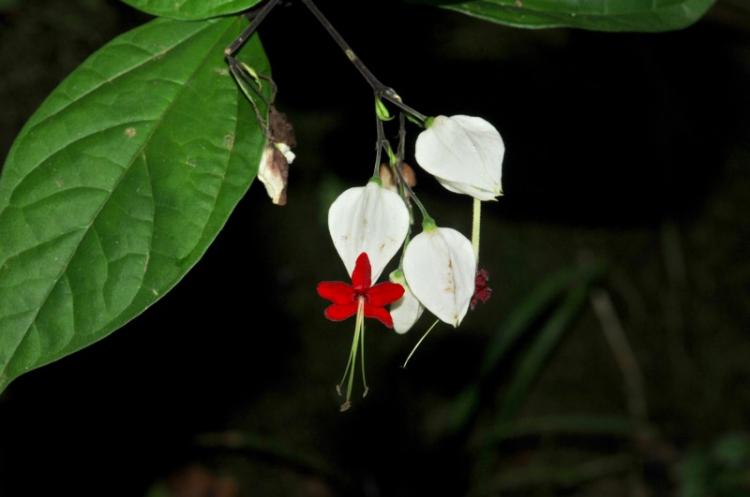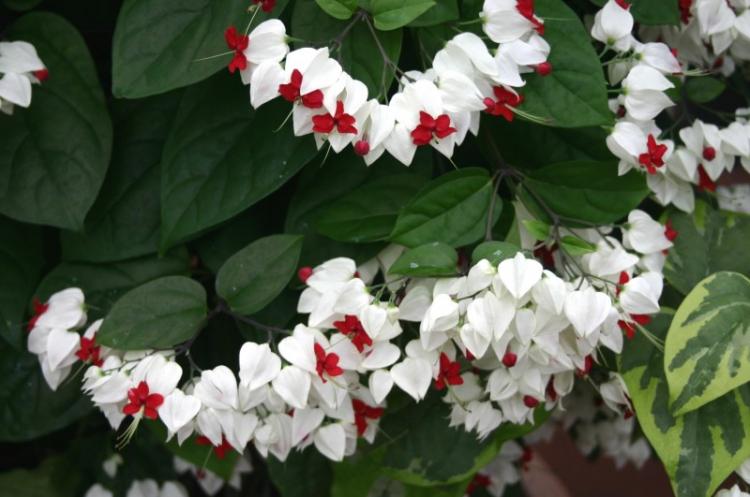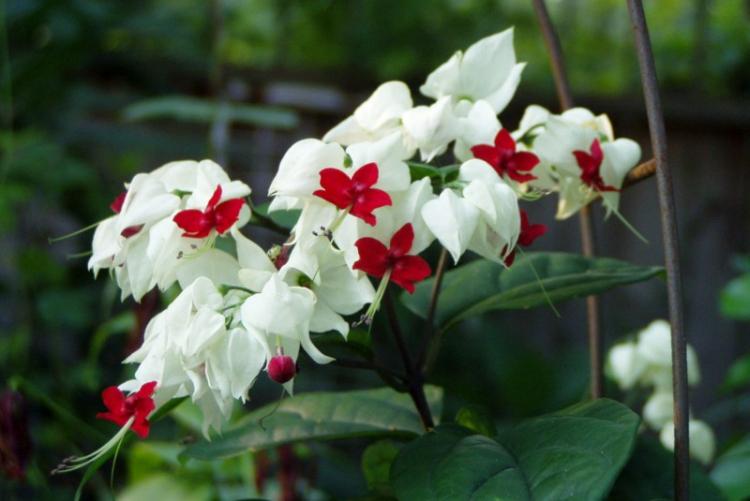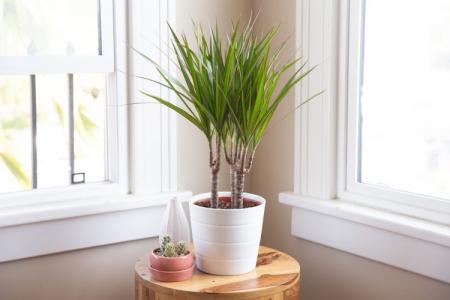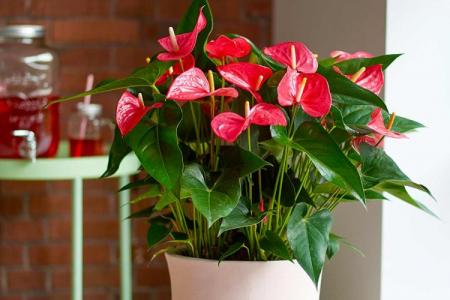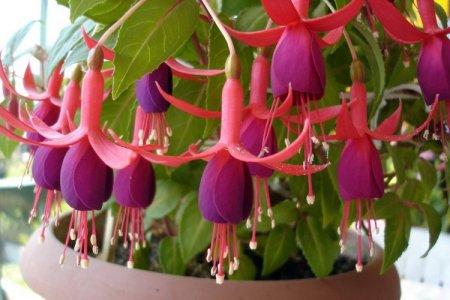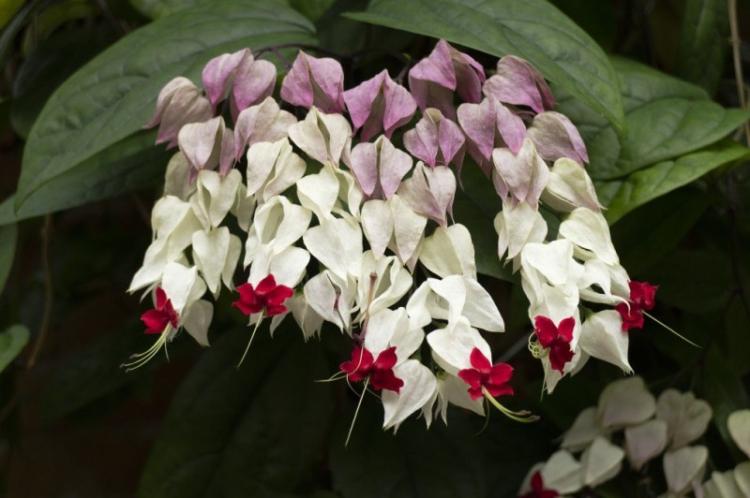
Do you like elegant decorative vines that grow magnificently and capture the entire green area in the house? Then Thompson's Clerodendrum, the flower of love or the "vine of the bleeding heart" is perfect for you. Is there something more elegant and sophisticated to create a romantic and cozy atmosphere in the apartment? And we will tell you how to care for an unusual and sensitive variety.
general characteristics
Clerodendrum Thompson is named after George Thompson, a Scottish traveler who first brought an African wonder to Europe. Under natural conditions, a wild liana grows up to 3 meters, but in everyday life, flower growers have long learned to mold even bushes from it.
Luscious dark glossy leaves are segmented like quilts. They stretch up to 12 cm, and against their background dense inflorescences from buds-lanterns look especially expressive. Breeders love Thompson's Clerodendrum for its abundant and long flowering - from early spring to mid-autumn.
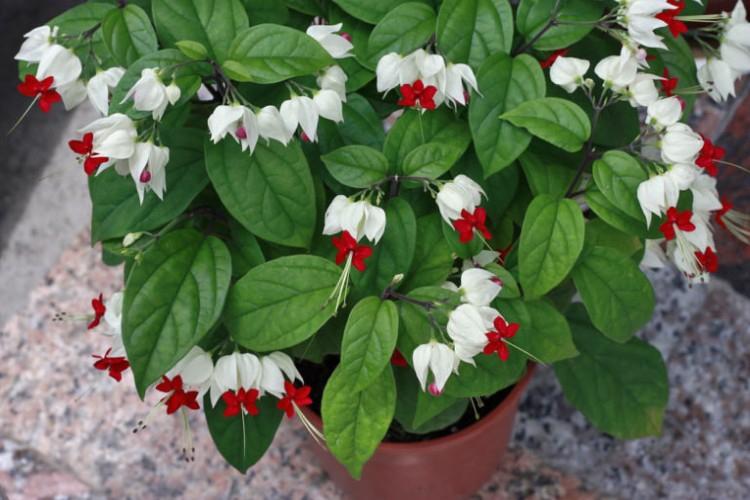
Thompson's clerodendrum received its romantic nicknames in everyday life for its unusual appearance: scarlet corollas resembling hearts protrude from the snow-white pre-flowers. Less common varieties with other shades, but they are always light, pastel. When the corollas fade, the petals change color to pale lilac and remain for several months until the orange fruit-boxes are formed.
At various times, clerodendrum was also called the tree of fate: it was believed that it is more magnificent and more beautiful, the better and richer the life of its owner.
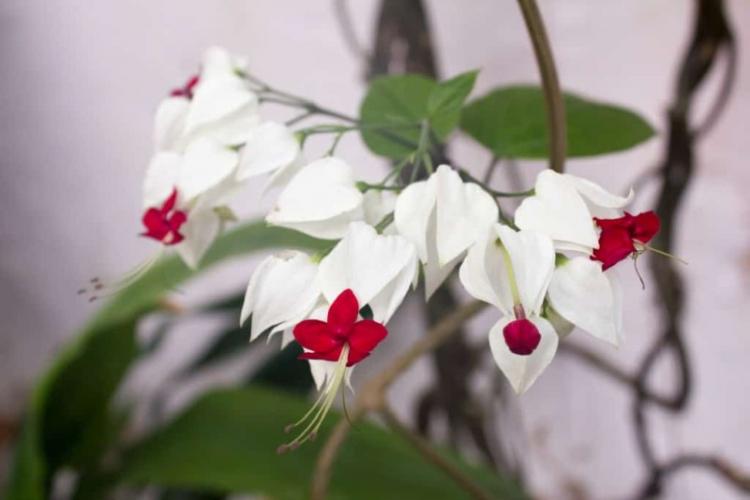
Caring for Thompson's Clerodendrum
Do not forget that a capricious plant will drop foliage for any non-compliance with the desired conditions. At the same time, this is almost the only large representative of its kind that takes root in houses or apartments.
Temperature
Thompson's Clerodendrum is a thermophilic plant, but it doesn't like excessive heat. The optimal regime in summer is 18-25 degrees, and in winter - about 15, not lower. Do not worry when the flower sheds its leaves in the cold season: this is a natural process, it needs rest, otherwise the flowering next year will be very sluggish and scarce.
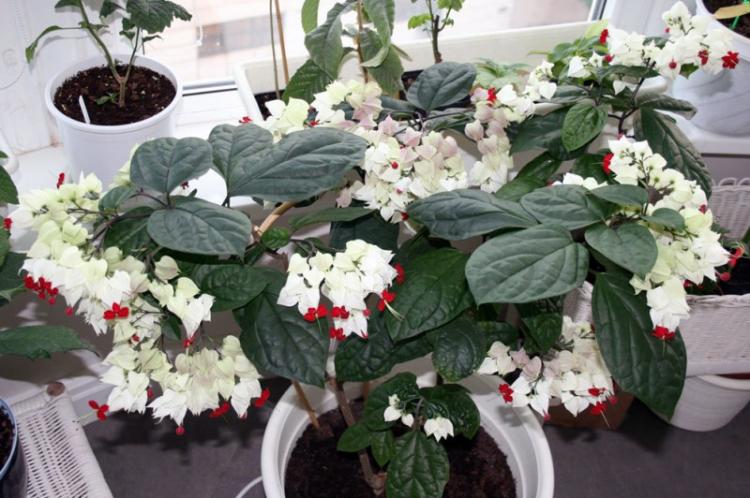
Lighting
Clerodendrum needs a bright, but diffused light, so on the south side it will have to be hidden in the shade, and on the north side it will not be able to bloom. The best option is a window sill on the west or east side of the house.
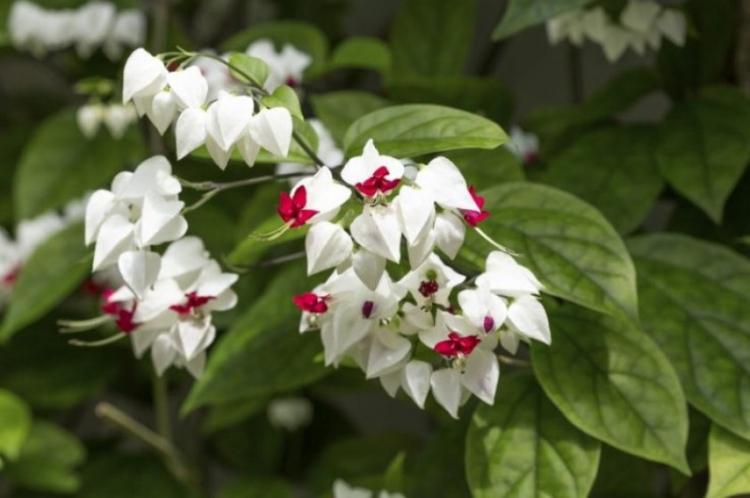
Watering
Clerodendrum loves spraying regularly in summer or even winter in a heated room. But when the vine has already dropped the leaves, there is no need for the procedure: the main thing is, do not leave the flower right next to the radiator.
During warmer seasons, clerodendrum needs abundant and intense watering as the topsoil dries up. Both the drying out of the rhizome and its excessive moisture are equally detrimental to the flower. But when the temperature is low, the earth dries out longer, so water it less and more carefully.
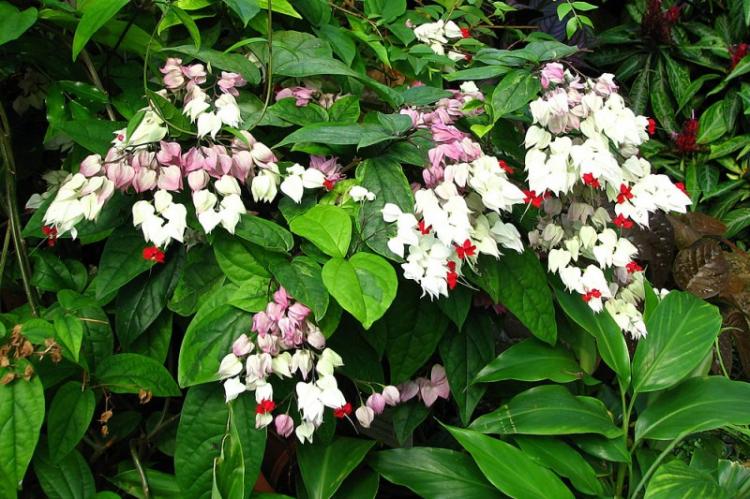
Fertilizers and feeding
It is necessary to feed Thompson's clerodendrum only during active growth and flowering: in winter and summer. Complex liquid fertilizers are suitable for home flowering plants. In the fall, gradually reduce the frequency of their introduction, and in the winter, stop altogether.
Dense flowering clerodendrum needs a rich nutrient soil and a slightly acidic environment. For example, a mixture of flower soil for roses and azaleas in a ratio of about 3 to 1 is suitable. Be sure to take care of drainage: pour a layer of small stones, expanded clay or crushed brick into the pot.
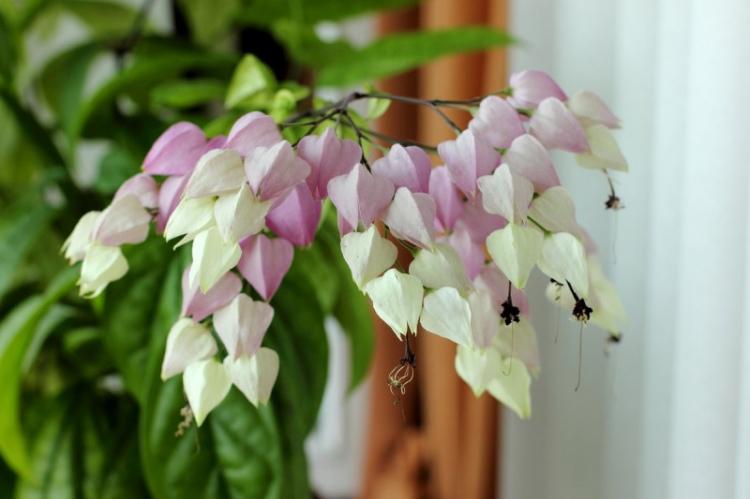
Pruning
Lush and lush growth is the hallmark of Thompson's Clerodendrum, so systematic deep pruning is essential. Do this immediately with the arrival of spring, until the flower begins to actively grow.
Feel free to shorten large shoots by about a third to stimulate new side branches, and therefore new flowers. Keep in mind that the buds appear only on young stems, so that the new plant does not need to be shortened. But you can pinch it so that it becomes even more branched within a year.
Thompson's Clerodendrum is grown as an ampelous vine and is allowed to run along a shelf or wall. An ordinary string, special lattices or fasteners are suitable as a support. Thus, with enough light, you can direct the plant anywhere.
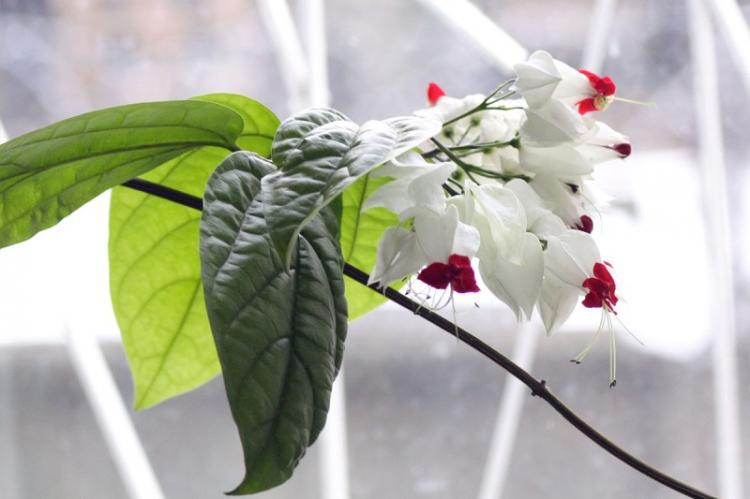
But if you prefer bushy clerodendrum, you cannot do without regular molding. Prune too long and elongated shoots as you would during normal pruning.
Leave only 3-4 of the strongest lignified shoots and completely cut out the rest. As soon as new green shoots appear, pinch them right away - and the plant will gradually bush.
It is not recommended to propagate such a bush by dividing: if you do not cut out the root shoots, it will be thicker. And if it's time to thin out the clerodendrum, shorten the stems from the middle.
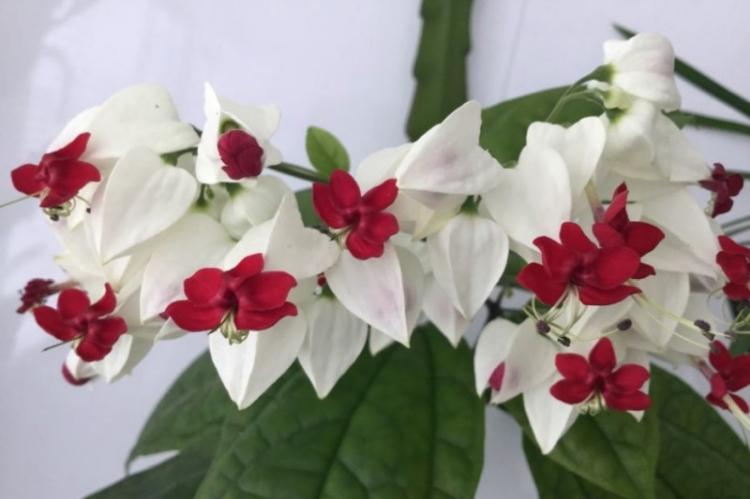
Planting and breeding
Cutting for propagation of Thompson's Clerodendrum is easier, faster and more familiar, and the shoots can be left after pruning. They quickly take root in water and after that you can plant them in pots with a diameter of 6 cm or more. At first, cover the young seedlings with a cap to create the effect of a mini-greenhouse until the first strong shoots appear.
But you can also use seeds: they are sown by mid-March in a mixture of soil, peat, sand and water. After that, it is important to ensure stable humidity, temperature and lighting. Therefore, in an apartment, this technology is not entirely convenient - it is rather a greenhouse or greenhouse option.
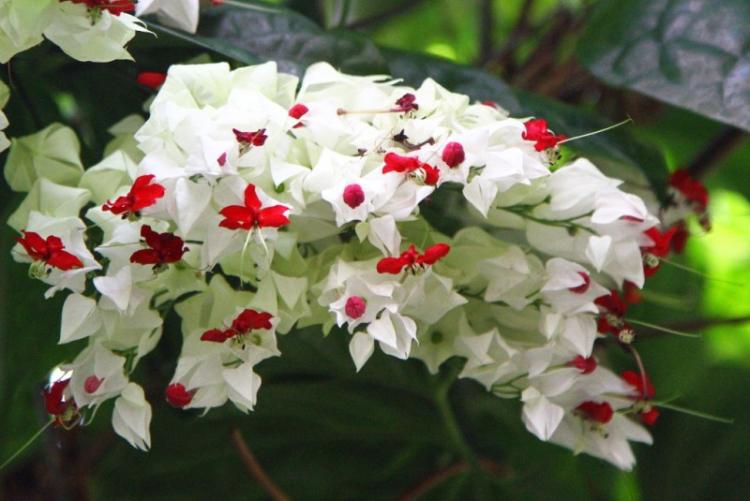
After 1-1.5 months, seedlings appear, which soon stretch into bright green leaves. After that, the seedlings must be dived or planted in the same flowerpots with a diameter of 6 cm. Further care is the same as for adult Thompson's clerodendrum.
A young growing plant should be replanted as the diameter of the pot increases. For adult clerodendrum, transplanting every few years into the same flowerpot is enough to renew the soil and prune the rhizome.
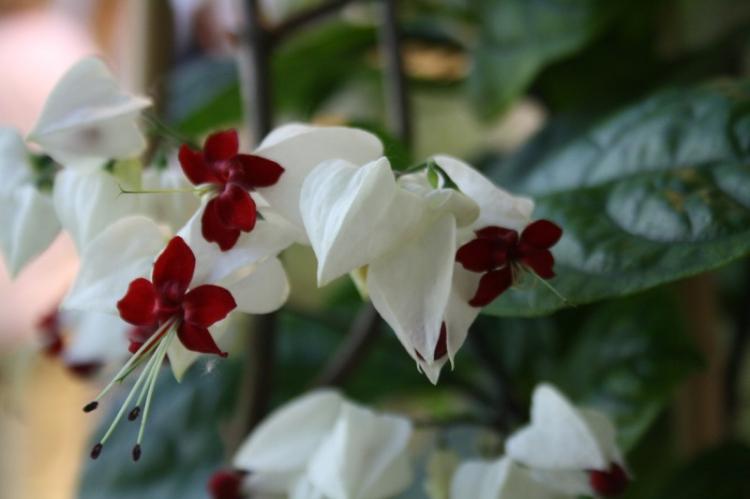
How to make Thompson's clerodendrum bloom?
As already mentioned, in order for clerodendrum to bloom luxuriantly and intensely, not only proper care is important, but also a state of rest. For the winter, move the vine to a cooler place and reduce watering to a minimum. So she will be able to shed the leaves, gain new resources and in the spring will grow again with buds.
Overwintering in a room that is too warm is the most common reason clerodendrum does not bloom. But this can be fixed: place the plant in a dark and cool place for at least 2-3 weeks, then cut off the old shoots, replace the soil and intensify watering. This should help restore flowering even if the winter has gone wrong.
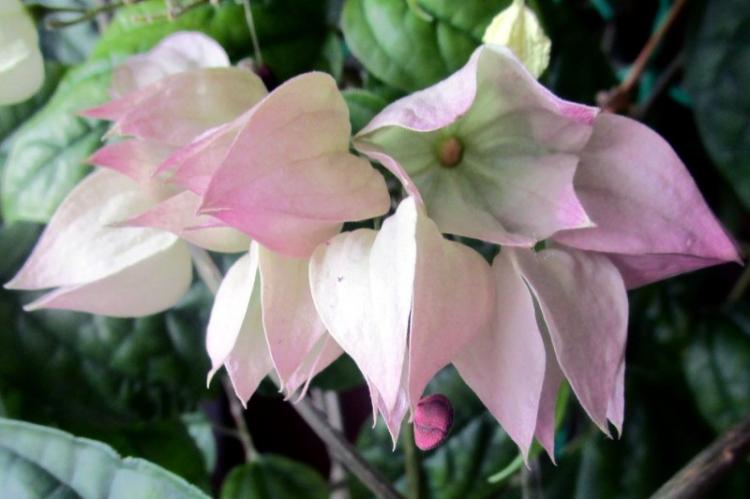
Pests and diseases
The main reason for all the problems of the clerodendrum in the apartment is improper care. Summer leaf fall signals low humidity, insufficient watering, lack of nutrients, and brown or yellow spots on the leaves - sunburn. After an incorrect wintering, the clerodendrum simply will not bloom - it will not have enough resources.
Of the pests, aphids or spider mites most often attack dense juicy foliage. A thin web can be seen visually, and white dots appear on the back of the leaves. A shiny bloom testifies to the whitefly, and the insect itself hides on the back of the leaf.
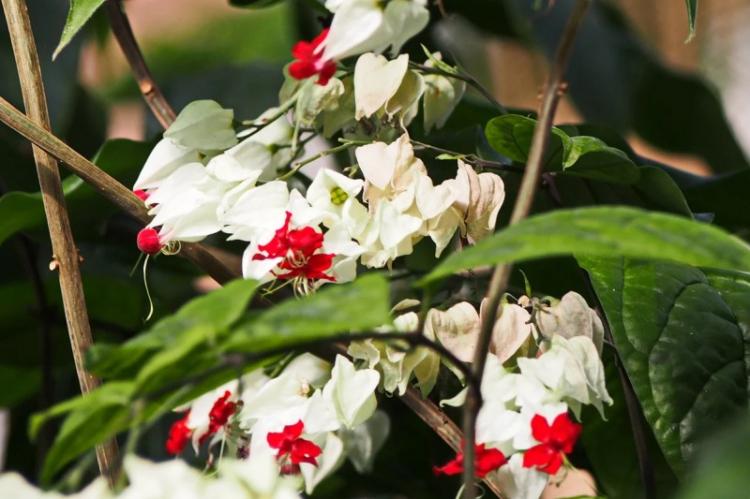
Due to the mealybug, the growth of the plant slows down, the leaves fall off, and light balls form on the surface. Another possible cause of wilting is the scale insect, which can be seen by the brown pustules on the stem.
First, thoroughly rinse the flower with warm water, after covering the soil with a film.Then cut off all irreversibly damaged branches and treat the plant with insecticides.
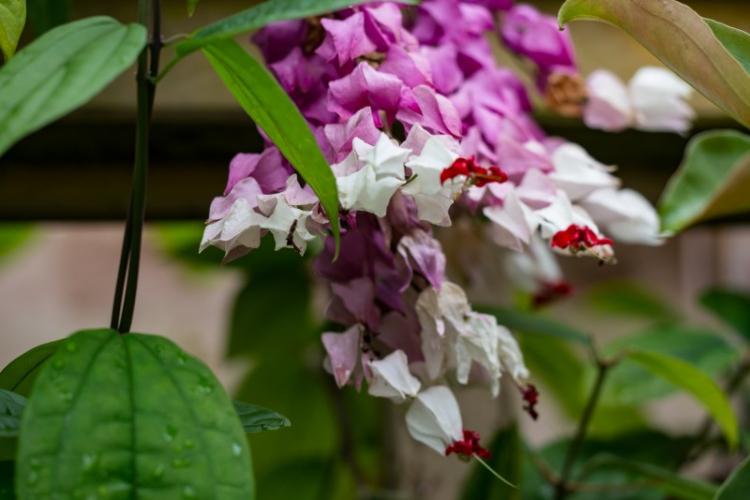
Clerodendrum Thompson - photo
Thompson's Clerodendrum is considered one of the most beautiful domestic vines for a reason. Do you still doubt it? We have compiled this selection of photos especially for you!
